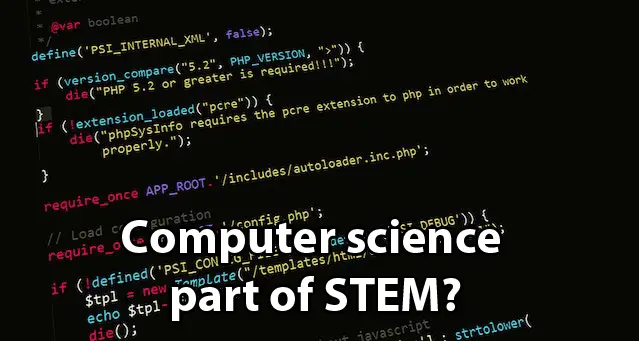
The Growing Influence of STEM Education
STEM education has witnessed a remarkable rise in popularity in recent years. With advancements in technology and the increasing demand for skilled professionals in science, technology, engineering, and mathematics fields, the influence of STEM education continues to grow. As more and more industries rely on innovative solutions and cutting-edge technologies, the need for individuals with a strong foundation in STEM subjects becomes crucial.
One key factor contributing to the growing influence of STEM education is its interdisciplinary nature. By integrating science, technology, engineering, and mathematics, students are provided with a holistic understanding of how these subjects are interconnected. This multidisciplinary approach not only empowers students to think critically but also equips them with the skills needed to solve complex problems in real-world scenarios. As a result, STEM-educated individuals are well-equipped to thrive in diverse careers, ranging from computer science and robotics to environmental engineering and biomedical research. The growing influence of STEM education is not only shaping the future of various industries but also preparing individuals for the challenges and opportunities of tomorrow.
Exploring the World of Science, Technology, Engineering, and Mathematics
Science, technology, engineering, and mathematics, commonly known as STEM, are fields that have grown in prominence and have become essential in today’s world. These disciplines are closely intertwined and offer countless opportunities for exploration and discovery. Science allows us to understand the natural world, with its principles and laws guiding our understanding of the universe. Technology enables us to develop innovative solutions, creating tools and systems that improve our lives. Engineering facilitates the design and creation of structures and products, applying scientific and mathematical principles to solve practical problems. Mathematics provides the framework for logical reasoning and problem-solving, with its intricacies and patterns underpinning many aspects of our daily lives.
Exploring the world of STEM introduces individuals to a vast array of knowledge and possibilities. Science unveils the secrets of nature, from the microscopic world of cells to the vastness of outer space. Technology broadens our horizons, enabling us to communicate, access information, and perform tasks more efficiently. Engineering challenges us to design and construct solutions that address various societal needs, from sustainable buildings to advanced transportation systems. Mathematics, with its logical and precise nature, empowers us to analyze and solve complex problems, from predicting stock market trends to designing algorithms for artificial intelligence. Together, these disciplines offer a rich tapestry of learning and discovery, fostering critical thinking, innovation, and creativity.
Unveiling the Fascinating World of STEM Subjects
The world of STEM subjects is an intriguing realm that encompasses a diverse range of disciplines. Science, technology, engineering, and mathematics offer endless possibilities for discovery and innovation. From unraveling the mysteries of the universe to revolutionizing everyday life with technological advancements, the allure of STEM subjects is undeniable.
In the realm of science, the pursuit of knowledge knows no bounds. Whether it is delving into the depths of biology to understand the intricacies of life or exploring the vastness of space to comprehend the cosmic wonders, scientists are constantly pushing the boundaries of human understanding. The ever-evolving nature of technology also captivates our imaginations, as we witness the rapid advancements that reshape our lives. From artificial intelligence to virtual reality, technology permeates every aspect of our society, paving the way for a future filled with endless possibilities. By bringing together the creative minds of engineers and mathematicians, we witness the transformative power of their collaborations. Engineers utilize their ingenuity to design and build structures, bridges, and machines that improve the quality of life, while mathematicians provide the theoretical foundation to solve complex problems and optimize processes. Collectively, these STEM subjects offer a dynamic and fascinating world that beckons us to explore its wonders.
The Wide Array of STEM Disciplines
From the depths of the ocean to the vastness of outer space, the wide array of STEM disciplines encompasses a vast and diverse range of fields. Perhaps one of the most well-known disciplines within STEM is science, which encompasses biology, chemistry, physics, and many more. These scientific pursuits unlock the mysteries of nature, allowing us to understand the building blocks of life, the laws that govern the universe, and everything in between. From studying the inner workings of cells to exploring the far reaches of space, science never fails to captivate the human mind.
Technology, on the other hand, has rapidly become an integral part of our everyday lives. The realm of technology spans across various disciplines such as computer science, information technology, and electrical engineering. It delves into the world of coding, software development, network management, and so much more. Without technology, we would be deprived of the technological advancements that have revolutionized communication, transportation, and healthcare. The ever-evolving world of technology offers endless possibilities and continues to push the boundaries of innovation.
Understanding the Popularity of STEM Fields
The popularity of STEM fields can be attributed to several key factors. One such factor is the growing recognition of the importance of science and technology in our rapidly advancing world. As society becomes increasingly dependent on technological advancements, the need for skilled professionals in STEM disciplines becomes more evident. From healthcare and transportation to communications and energy, STEM fields play a crucial role in improving our quality of life and driving progress in various industries.
Moreover, the allure of STEM fields also lies in their promising job prospects. With the demand for STEM professionals on the rise, career opportunities in these fields are abundant. STEM graduates often command competitive salaries and have a higher likelihood of securing stable employment. This factor, coupled with the intellectual challenge and fulfillment that STEM disciplines offer, makes them an attractive choice for students with an aptitude for problem-solving and a desire to make a tangible impact on society. The appeal of STEM fields extends beyond financial incentives, as many individuals are drawn to the chance to contribute to groundbreaking discoveries and innovations that shape the future.
Examining the Demand for STEM Education
STEM education has seen a tremendous surge in demand over the past decade. The increasing reliance on technology, innovation, and scientific advancements in various industries has created a need for individuals with strong foundational knowledge in science, technology, engineering, and mathematics. As a result, the demand for STEM education has skyrocketed, with both students and parents recognizing its significance in today’s rapidly evolving world.
One of the primary reasons for the high demand for STEM education is the abundance of career opportunities available in these fields. From computer programming and data analysis to robotics and aerospace engineering, the job market is teeming with lucrative and fulfilling STEM careers. Employers across industries are actively seeking employees with the ability to think critically, problem-solve, and adapt to changing technologies – all skills that are honed through a solid STEM education. In a highly competitive job market, individuals with a strong foundation in STEM subjects have a distinct advantage, and this realization has fueled the demand for STEM education even further.
Discovering the Allure of Science and Technology
Science and technology have always held a certain allure for individuals with a curious and analytical mindset. From a young age, many are captivated by the wonders of the natural world and the possibilities that arise from innovation and invention. The field of science allows individuals to explore and understand the mysteries behind our universe, while technology presents the means to improve our daily lives and propel us into the future. With science and technology acting as the driving forces behind countless advancements and discoveries, it’s no wonder that these subjects continue to draw the attention and fascination of both the young and old alike.
Science offers a gateway into comprehending the intricacies and complexities of the world we inhabit. From the enigmatic realms of outer space to the profound mysteries of the human body, scientific inquiry encourages individuals to question and seek answers. The allure lies in the pursuit of knowledge, the excitement of uncovering new truths, and the opportunity to make impactful contributions to our collective understanding. Similarly, technology entices us with its potential to transform our lives. Whether it’s the convenience of smartphones, the boundless opportunities provided by the internet, or the promise of breakthrough innovations like artificial intelligence and robotics, technology represents our ability to shape the future and create solutions to pressing challenges. By embracing the allure of science and technology, we open ourselves up to a world of endless possibilities and the chance to make meaningful contributions to society.
The Importance of Engineering and Mathematics in Modern Society
Engineering and mathematics play a crucial role in shaping modern society. From building infrastructure to developing technological advancements, engineering is at the core of innovation. It combines science and math to design and create solutions that solve complex problems. Through engineering, concepts are transformed into tangible reality, improving the lives of individuals and communities alike. Moreover, mathematics, with its logical and analytical approach, provides the foundation for countless industries and fields of study. Whether it involves calculating financial transactions, predicting market trends, or solving intricate algorithms, mathematics is the language that allows us to make sense of the world around us.
In today’s fast-paced and technologically-driven world, the importance of engineering and mathematics cannot be underestimated. They are the driving forces behind countless advancements that shape our daily lives. Engineers and mathematicians work together to improve our infrastructure, find solutions to environmental problems, enhance healthcare, optimize transportation systems, and develop cutting-edge technologies. They are the innovators who bridge the gap between imagination and reality, ensuring progress and growth in various sectors. By harnessing the power of engineering and mathematics, we can continue to develop sustainable solutions, improve efficiency, and address the challenges of a rapidly evolving world.
Navigating the Diverse Pathways of STEM Careers
Aspiring individuals seeking to embark on a career in STEM (Science, Technology, Engineering, and Mathematics) are presented with a multitude of diverse pathways to explore. Since STEM encompasses a wide range of disciplines, the opportunities within these fields are vast and abundant. From computer science to biology, from aerospace engineering to data analytics, the options seem limitless. The incredible variety ensures that individuals with different interests and strengths can find a niche that aligns with their passions and talents.
One of the appealing aspects of navigating a STEM career is the ability to constantly learn and adapt. Given the ever-evolving nature of scientific research, technological advancements, engineering breakthroughs, and mathematical discoveries, professionals in these fields must stay abreast of the latest developments. Continuous learning is not just encouraged but often required, making it a thrilling and intellectually stimulating journey for those curious minds who are passionate about expanding their knowledge and pushing the boundaries of innovation.
In conclusion, Navigating the Diverse Pathways of STEM Careers offers an exciting and diverse landscape for individuals interested in pursuing professions related to science, technology, engineering, and mathematics. The breadth of options available ensures that there is something for everyone, regardless of their interests and strengths. Furthermore, the dynamic nature of the field allows for continual growth and learning, making it an enticing and intellectually stimulating journey for those seeking to make a significant impact in their chosen STEM discipline.
Inspiring the Next Generation of STEM Innovators
STEM education plays a crucial role in inspiring and nurturing the next generation of innovators. With its emphasis on science, technology, engineering, and mathematics, STEM education equips students with the necessary skills to tackle complex problems and contribute to advancements in various fields. By engaging students in hands-on learning experiences and encouraging curiosity, STEM education cultivates critical thinking, problem-solving, creativity, and collaboration – qualities that are essential for success in the rapidly evolving technological landscape.
In order to inspire the next generation of STEM innovators, it is vital to foster a supportive and inclusive learning environment. Encouraging diversity and equity in STEM education allows students from all backgrounds to actively participate and contribute their unique perspectives. Additionally, incorporating real-world applications and relatable examples in teaching can help students connect their classroom learning to the world around them, igniting their passion and curiosity for STEM subjects. By providing students with opportunities to apply their knowledge in practical settings and exposing them to the vast array of STEM career possibilities, we can inspire and empower them to pursue further studies and careers in STEM disciplines.

















